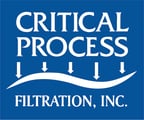A solid-dose pharmaceuticals manufacturer was using a process that required elevated temperatures and solvents.
The solvents attacked most membranes so the filters chosen were PTFE membrane filters in a single housing on a transfer line between an elevated temperature reaction vessel and downstream processes.
The Filtration Challenge
Filters were replaced after each batch and would become completely fouled at the beginning of new production shifts at infrequent, random intervals. The customer’s process engineers, production, and quality staff were unable to find any specific process changes that might cause the PTFE membrane filters to become fouled. All measured process parameters were within specifications at all times. As a result, customer staff believed that inconsistencies in filter construction and performance were the likely cause of the fouling. CPF’s Technical Support Team was called to investigate the inconsistent performance of the filters.
Filter Review
To start that process, the CPF team looked at their internal records documenting the quality of the filters during production. They found that all PTFE filters sold to the customer and used in all production batches met strict specifications for pharmaceutical-grade PTFE membrane filters (flow rate, bubble point, etc.), as well as Integrity test specifications performed as part of filter production. The Technical Services Team concluded that the filters were consistent in their construction and should be just as consistent in their performance. The filters were fouling because some other factor had changed that was not being seen by the customer’s staff.
Process Review
CPF Application Engineers met with customer production and quality personnel to do a step-by-step review of the events leading up to each fouled filter event. As with all process reviews conducted by the team, a series of questions was asked to determine what factors will most affect the process and filter performance. Together they reviewed the following:
- Timing of the replacement of filters between batches as normally done
- Filtration goals – reduce particles after the reaction vessel to capture undissolved particles
- Chemical composition of the process fluid – it was found to be the same in all batches and did not affect the PTFE membrane
- Known or suspected contaminants to be removed - customer-provided analysis showed the usual low level of contaminants in all batches
- Process conditions - flow rate, pressure, temperature - as measured, were within process specifications
- Cleaning and sanitization requirements – no filter cleaning was done and the same steam sterilization procedure was used for all batches.
- Target batch size, expected processing time - normal process sizes, though process time was longer when the filters fouled
After the meeting, no cause for the filter fouling was evident, so the Technical Service Team asked to analyze a fouled filter. There were no fouled filters retained by the customer. Waste handling procedures required prompt disposal according to strict protocols and forbade shipping the filters anywhere outside their facility. The only remaining avenue of investigation was direct observation of the process inside the facility.
Process Observation
After satisfying all of the customer’s required security clearances, members of the CPF team were allowed to observe batch processing inside the facility. That included watching the way the process was managed and how and where parameters were monitored. Multiple batches were processed without incident. Then, after a shift change, the filters were fouled and would not allow flow. The filters were immediately replaced and the fouled filters were brought to an on-site laboratory for analysis.
The results were:
- The filters were fouled with crystals of the product (not contaminants)
- The customer process staff stated that the crystals would not form unless the liquid temperature dropped below a specified limit
- The temperature in the reaction vessel was always above the limit
- The temperature in the transfer line and filter housing was not monitored
- Filtrate testing and acceptance criteria - the fluid filtered before each fouling event was within specifications, indicating filter performance was also within specifications
Problem Identified
Further investigation found that while the reaction vessel was temperature controlled and insulated, the transfer piping was not. It was found that under normal operating conditions, the liquid flowed through the transfer line quickly enough so that it did not fall below the temperature limit. However, if the process was stopped for an extended period - extended shift change or because of an upset elsewhere in the process stream - the temperature could drop below the limit. A review of customer operating records (which included documentation of process upsets) showed that the flow through the transfer pipe was stopped for extended periods before each filter fouling incident.
Solution Implemented
The customer installed temperature control and monitoring equipment on the transfer line and insulated the piping. There has been no further filter fouling events on that transfer line.
